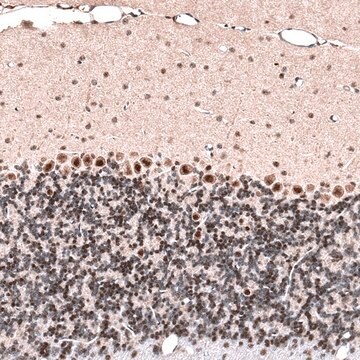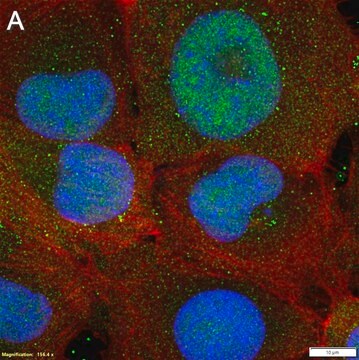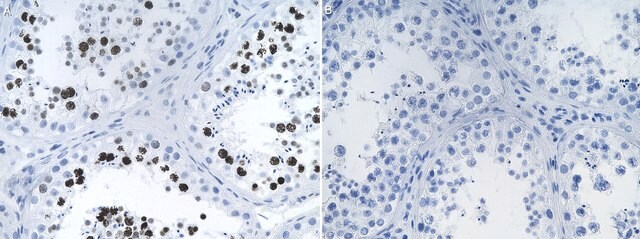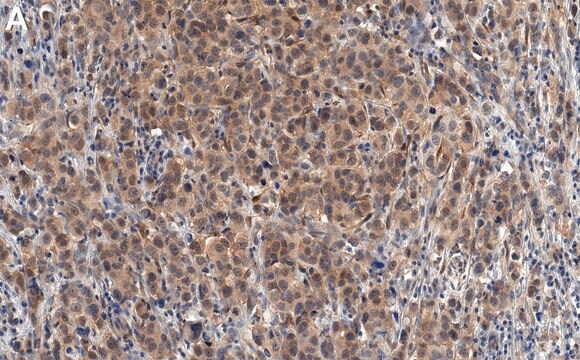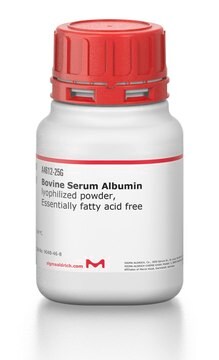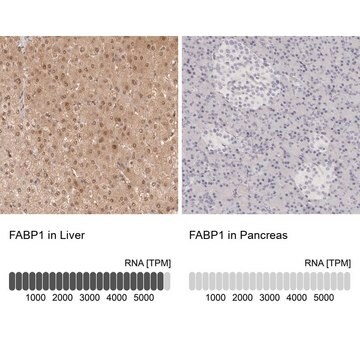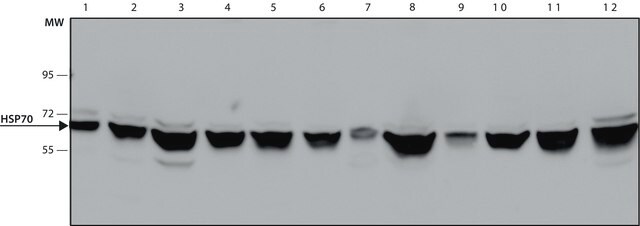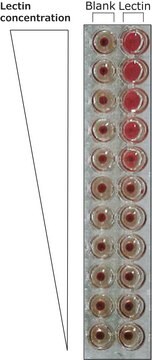일반 설명
We are committed to bringing you greener alternative products, which adhere to one or more of The 12 Principles of Green Chemistry.This antibody is Preservative-free, produced without the harm or sacrifice of animals and exceptionally stable to allow for ambient shipping and storage if needed and thus aligns with "Waste Prevention", "Designing Safer Chemicals" and "Design for Energy Efficiency".
Click here for more information.
ZooMAb® antibodies represent an entirely new generation of recombinant monoclonal antibodies.Each ZooMAb® antibody is manufactured using our proprietary recombinant expression system, purified to homogeneity, and precisely dispensed to produce robust and highly reproducible lot-to-lot consistency. Only top-performing clones are released for use by researchers. Each antibody is validated for high specificity and affinity across multiple applications, including its most commonly used application. ZooMAb® antibodies are reliably available and ready to ship when you need them.
특이성
Clone 2L9 is a ZooMAb® Rabbit recombinant monoclonal antibody that specifically detects GLI-1. It targets an epitope within 20 amino acids from the C-terminal region.
면역원
KLH-conjugated linear peptide corresponding to 20 amino acids from the C-terminal region of human GLI-1 protein.
애플리케이션
Quality Control Testing
Evaluated by Western Blotting in C6 cell lysate.
Western Blotting Analysis: A 1:1,000 dilution of this antibody detected GLI-1 in C6 cell lysate.
Tested Applications
Western Blotting Analysis: A 1:1,000 dilution from a representative lot detected GLI-1 in NIH3T3, HepG2, and SHSY5Y cell lysates and recombinant Human GLI-1 protein.
Immunohistochemistry (Paraffin) Analysis: A 1:100 dilution from a representative lot detected GLI-1 in human colon tissue sections.
Immunocytochemistry Analysis: A 1:100 dilution from a representative lot detected GLI-1 in SH-SY5Y cells.
Affinity Binding Assay: A representative lot of this antibody bound GLI-1 peptide with a KD of 1.7 x 10-7 in an affinity binding assay.
Note: Actual optimal working dilutions must be determined by end user as specimens, and experimental conditions may vary with the end user.
표적 설명
Zinc finger protein GLI1 (UniProt: P08151; also known as Glioma-associated oncogene, Oncogene GLI, GLI-1) is encoded by the GLI1 (also known as GLI) gene (Gene ID: 2735) in human. In vertebrates three Gli proteins (Gli-1, Gli-2, and Gli-3) have been described that despite the presence of several homologous regions, including a DNA-binding domain with five C2-H2 zinc fingers and a C-terminal transcription activation domain, have distinct activities and are not considered to be functionally equivalent. Gli-1 and Gli-2 function primarily as activators whereas Gli-3 has a repressor role. Gli-1 acts as a transcriptional activator that binds to DNA consensus sequence 5′-GACCACCCA-3′. Its DNA binding is mediated by five highly conserved tandem C2-H2 zinc finger (ZF) domains and a consensus histidine-cysteine linker sequence between zinc fingers. It also has a single SUFU-interacting site that is localized in the N-terminal region and is responsible for SUFU-mediated cytoplasmic retention of Gli-1. Gli-1 regulates the transcription of specific genes during normal development and plays a role in craniofacial development and digital development, as well as development of the central nervous system and gastrointestinal tract. Gli-1 serves as a transcriptional effector at the terminal end of the Hedgehog signaling (Hh) pathway and is tightly regulated during embryonic development and tissue patterning/differentiation. It is expressed at low levels in differentiated tissues. However, its expression is enhanced in certain cancers and its aberrant activation has been linked to proliferation, survival, angiogenesis, metastasis, metabolic rewiring, and chemotherapeutic resistance. This ZooMAb® recombinant monoclonal antibody, generated by our propriety technology, offers significantly enhanced specificity, affinity, reproducibility, and stability over conventional monoclonals. (Ref.: Avery, JT., et al. (2021). Front. Oncol. 11:673154; Lo, H-W., et al. (2009). Cancer Res. 69(17); 6790-6798; Kinzler, KW., and Vogelstein, BV. (1990). Mol. Cell Biol. 10(2); 634-642).
물리적 형태
Purified recombinant rabbit monoclonal antibody IgG, lyophilized in PBS with 5% Trehalose, normal appearance a coarse or translucent resin. The PBS/trehalose components in the ZooMAb formulation can have the appearance of a semi-solid (bead like gel) after lyophilization. This is a normal phenomenon. Please follow the recommended reconstitution procedure in the data sheet to dissolve the semi-solid, bead-like, gel-appearing material. The resulting antibody solution is completely stable and functional as proven by full functional testing. Contains no biocide or preservatives, such as azide, or any animal by-products. Larger pack sizes provided as multiples of 25 μL.
재구성
300 μg/mL after reconstitution at 25 μL per vial. Please refer to guidance on suggested starting dilutions and/or titers per application and sample type.
저장 및 안정성
Recommend storage of lyophilized product at 2-8°C; Before reconstitution, micro-centrifuge vials briefly to spin down material to bottom of the vial; Reconstitute each vial by adding 25 μL of filtered lab grade water or PBS; Reconstituted antibodies can be stored at 2-8°C, or -20°C for long term storage. Avoid repeated freeze-thaws.
법적 정보
ZooMAb is a registered trademark of Merck KGaA, Darmstadt, Germany
면책조항
Unless otherwise stated in our catalog or other company documentation accompanying the product(s), our products are intended for research use only and are not to be used for any other purpose, which includes but is not limited to, unauthorized commercial uses, in vitro diagnostic uses, ex vivo or in vivo therapeutic uses or any type of consumption or application to humans or animals.


